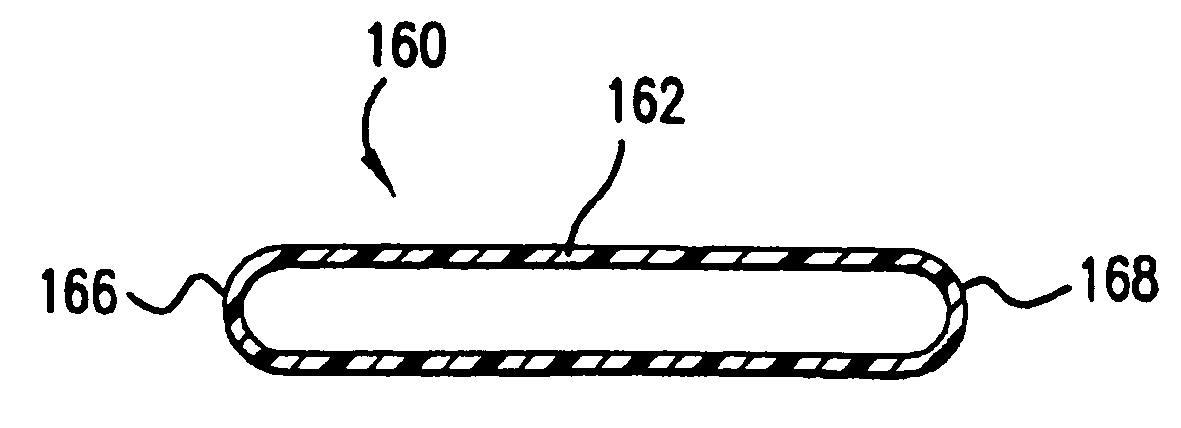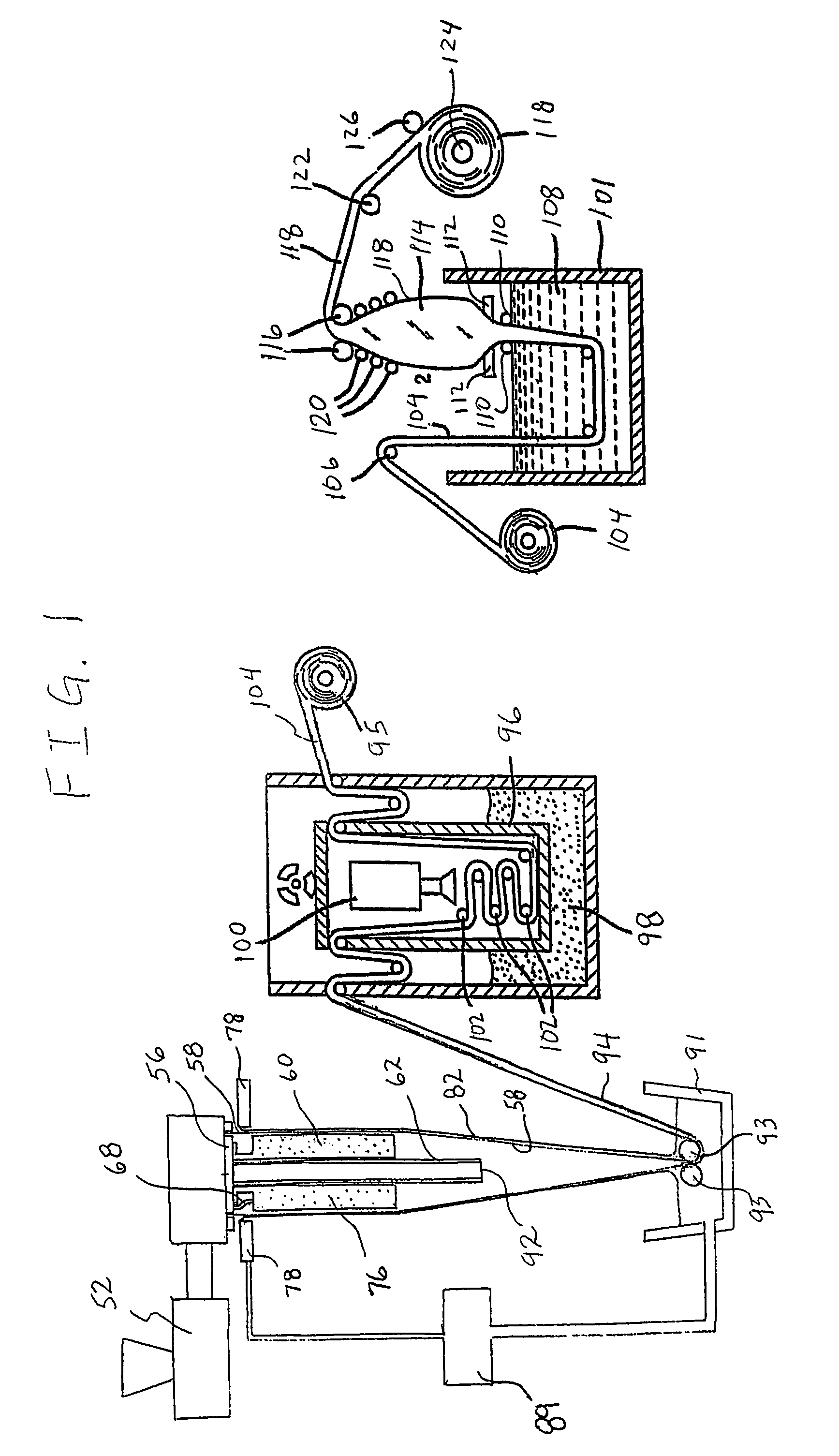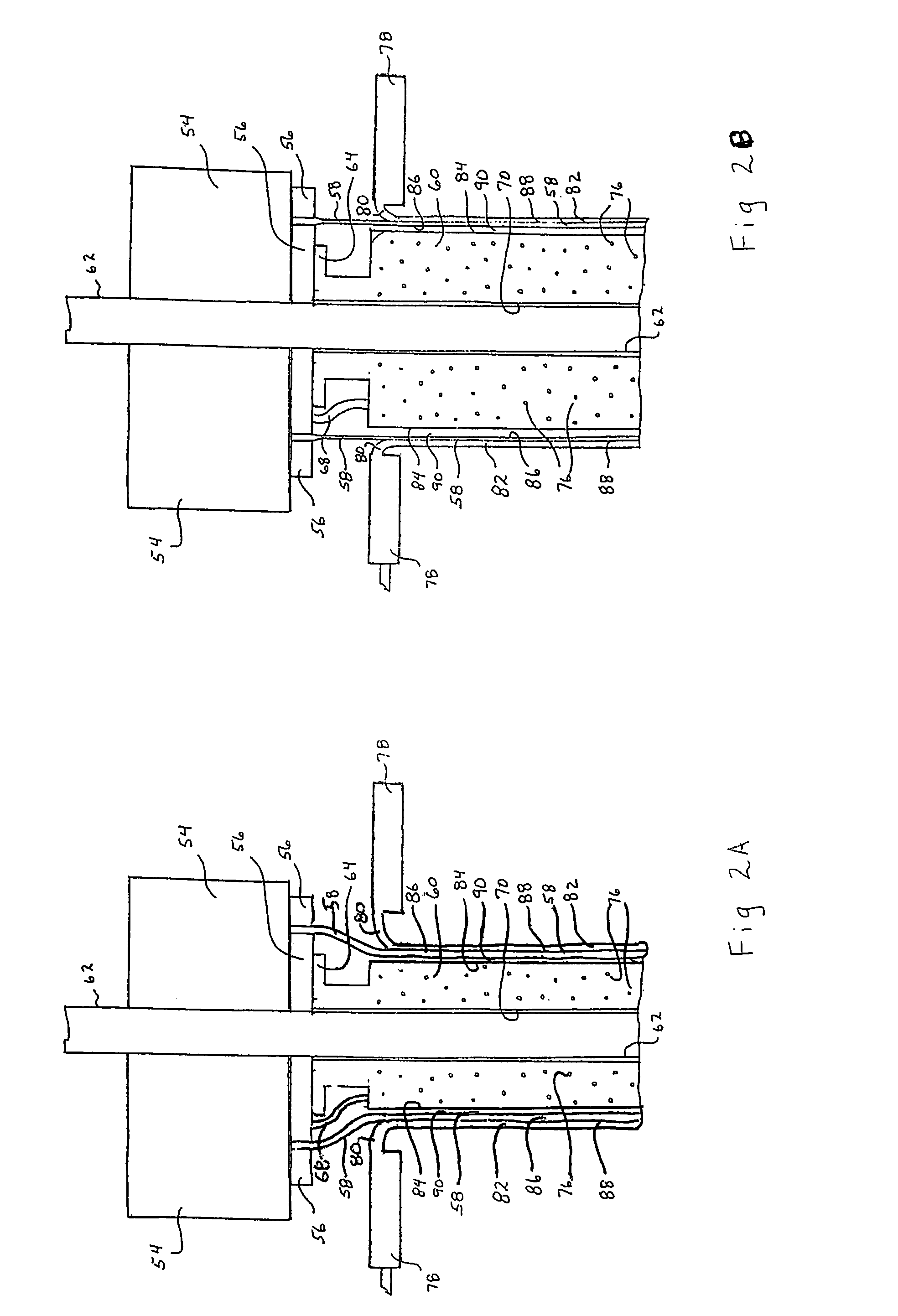Shrink film containing semi-crystalline polyamide and process for making same
a technology of semi-crystalline polyamide and shrink film, which is applied in the direction of transportation and packaging, synthetic resin layered products, and other domestic articles, can solve the problems of difficult production of semi-crystalline polyamide-based shrink films, relatively poor optical properties of heat-shrinkable polyamide-based films, and difficult solid-state orientation of extruded tapes. achieve high total free shrink, improve optical properties, and high total free shrink
- Summary
- Abstract
- Description
- Claims
- Application Information
AI Technical Summary
Benefits of technology
Problems solved by technology
Method used
Image
Examples
example 1
[0158]
CoreCoreSealantTie90% Nylon 1Barrier90% Nylon 1TieOuterVLDPE 1MA-LLD110% Nylon 2EVOH 110% Nylon 2MA-LLD1VLDPE 15 mils1 mil4 mils1 mil4 mils1 mil5 mils
[0159]The extrudate was cast from an annular die (diameter of 12.7 cm), over an air shoe, and was rapidly quenched by 7.2° C. water emitted from a water ring positioned about 57 mm below the die. The air shoe had an outside diameter of 8 cm and a length of 32 cm, and emitted cool air (15.6° C.) through 0.762 mm diameter holes spaced over the cylindrical surface of the air shoe, the holes being spaced apart by a distance of 14.3 mm, with the holes being arranged so that each hole inside the matrix of holes were surrounded by 6 holes. The airflow through the holes supported the film (so that it did not collapse) and cooled the film from the inside out, i.e., to assist in “freezing” the nylon quickly to minimize crystallization of the nylon. The pressure between the air shoe and the film was slightly above atmospheric pressure (i.e....
example 2
[0164]
CoreCoreSealantTie90% Nylon 1Barrier90% Nylon 1TieOuterLLDPE 3MA-LLD210% Nylon 2EVOH 110% Nylon 2MA-LLD2LLDPE 35 mils1 mil3 mils1 mil3 mils1 mil5 mils
[0165]The process of making the film of Example 2 was generally as carried out for the production of the film of Example 1. More particularly, the following parameters were employed:
[0166]
Die diameter12.7 CmTotal extrudate thickness19 milsAir shoe outside diameter:8 cmAir shoe length:32 cmTemperature of air15.6° C.Air shoe hole diameter0.762 mmemitted from air shoeDistance between14.3 mmPosition of Water Ring57 mm belowholes of air shoedieWater temperature7.2° C.Position of water57 mm belowemitted from water ringcontact with extrudatedieHot bath temperature83° C.immersion time2.5 secondsin hot bathdistance between upper1.9 meterssurface speed of nip15.8 m / minand lower nip rollersrollers below trapped bubblesurface speed of nip rollers51.8 m / minorientation factor2.4 Xabove trapped bubblein machine directionorientation factor3.3 XT...
example 3
[0168]The film of Example 3 was prepared in a manner similar to the preparation of the film of Example 2, described above. The film of Example 3 also had a total of 7 layers, in the following order, with the target thickness of each layer of the tape (i.e., the intended thickness of each layer of the tape, using the process design setup) shown in mils being indicated below the layer identity and resin composition:
PUM
| Property | Measurement | Unit |
|---|---|---|
| density | aaaaa | aaaaa |
| haze | aaaaa | aaaaa |
| transparency | aaaaa | aaaaa |
Abstract
Description
Claims
Application Information
 Login to View More
Login to View More - R&D
- Intellectual Property
- Life Sciences
- Materials
- Tech Scout
- Unparalleled Data Quality
- Higher Quality Content
- 60% Fewer Hallucinations
Browse by: Latest US Patents, China's latest patents, Technical Efficacy Thesaurus, Application Domain, Technology Topic, Popular Technical Reports.
© 2025 PatSnap. All rights reserved.Legal|Privacy policy|Modern Slavery Act Transparency Statement|Sitemap|About US| Contact US: help@patsnap.com



